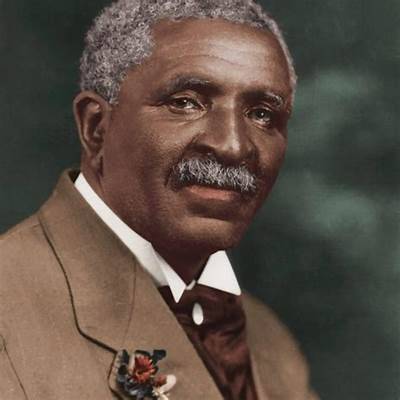George Washington Carver faced adversity from birth. Born around 1864, he lost his father just before his birth, and soon after, he and his mother were kidnapped by slave traders. George was recovered, but tragically, his mother remained lost. As an infant, he was left an orphan.
Despite his early frailty and illness, George's curiosity and work ethic shone through. At a young age, he began exploring nature, asking questions about the world around him. He started his formal education at ten, walking eight miles to a nearby school. To support himself, he took odd jobs and even lived in a barn. Eventually, he was adopted by a local family.
His thirst for knowledge led him to earn a Master's Degree in agriculture from Iowa State University in 1896. He then became the Head of the Agricultural Department at the Tuskegee Institute in Alabama.
George was not only a scientist but also an artist, studying piano and art. His scientific work revolutionized agriculture, especially with peanuts, sweet potatoes, and pecans. The acreage for peanut cultivation expanded from half a million to over four million acres between 1915 and 1918.
In a lesser-known episode from his life, Carver corresponded with Indian leader Mahatma Gandhi. In the 1930s, Gandhi was interested in improving the nutrition of poorer communities in India and sought Carver’s advice on peanut cultivation and nutrition.
Carver willingly shared bulletins and advised on planting techniques, emphasizing the nutritional value of peanuts. This exchange between two global figures of the time reflects not only Carver’s international reputation but also his willingness to use his expertise for the betterment of lives beyond American soil.
Carver was not just a scientist; he was a humanitarian deeply committed to education. One of his most innovative ideas to reach farmers and share his agricultural methods was the “Jesup Wagon,” a horse-drawn mobile classroom.
Named after New York financier and philanthropist Morris Ketchum Jesup, who funded the project, this wagon was filled with farming implements, soil samples, and various crop specimens. Carver himself would often ride the Jesup Wagon into communities to give lectures and demonstrations, providing farmers with the practical tools they needed to improve crop yields and soil quality.
This direct outreach had a tangible impact, changing farming practices and improving the lives of countless individuals.
After his passing in 1943, President Franklin D. Roosevelt hailed his achievements in agricultural chemistry and considered him an inspiring example to youth everywhere.


